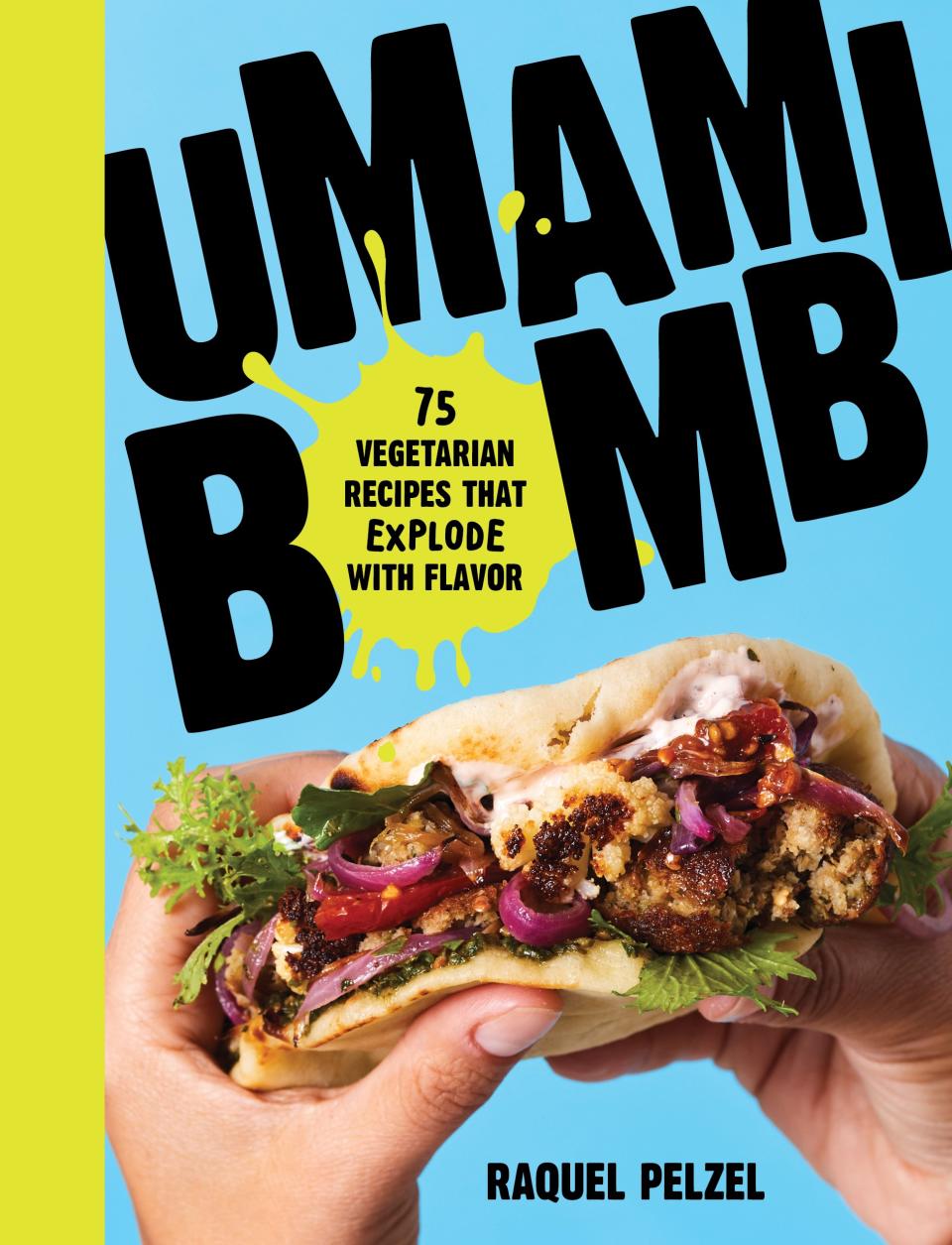This Chocolate Cake Is Flavored With Soy Sauce, And Yes It's Actually Delicious
Full disclosure: this is an article about adding soy sauce into the frosting of an otherwise pretty-standard chocolate sheet cake. If that's something that turns you off, don't hate—just click the back button now. If, however, you are the slightest bit intrigued, please, dive deeper with me into the wild dessert that I made for my friends over a long holiday weekend.
The recipe comes from Umami Bomb, a new cookbook by Epi contributor Raquel Pelzel which focuses on that elusive fifth taste: umami.
Umami, the savory taste sensation isolated by a Japanese chemist in 1908, is found naturally in tomatoes, mushrooms, aged cheeses, and more. In Umami Bomb, Pelzel distills nine distinct sources of umami into chapters that highlight the unique qualities each can bring to all kinds of dishes.

Umami Bomb by Raquel Pelzel - Cookbook Cover
The soy sauce chapter starts as one might expect, with an Asian-inspired soy dressing for a soba noodle salad. There's also a stir-fry, and a dish of kale wilted in chile-garlic oil and seasoned with soy sauce—all of it pretty standard, delicious-sounding fare. Then there's the soy-kissed marinara sauce and the soy-glazed Brussels sprouts—both a little atypical, but not so unusual. Then there is the chocolate cake.
It's a thick slab of fudgy dark chocolate–buttermilk cake, baked in the 9-by-13-inch pan (a cake, by the way, that would be delicious all on its own). But then comes the frosting, which consists solely of butter, powdered sugar, melted chocolate, vanilla extract, and—you guessed it—soy sauce.
Now, any baker will tell you that adding a little salt to something sweet will only highlight the dessert's inherent flavor. And what is soy sauce but a powerfully flavored source of salt? The thing is, Pelzel doesn't just use a little bit of soy sauce. A full two tablespoons are whipped into the frosting, which makes it the primary flavoring (other than the chocolate) as well as the only seasoning (aside from the mere one teaspoon of vanilla).
I brought the finished cake to a picnic over Labor Day weekend and asked my companions to guess what was different about the dessert, telling them to focus on the icing. Nearly everyone that tasted it had an immediate response of: "I love how salty it is!" That's not to say it was overly salty, but instead just reaching that brink. After that, no one even came close to guessing the secret. Most agreed that I'd used some kind of fruit liqueur. One thought it tasted "caramel-y, but not really like salted caramel."
I'd argue both taste perceptions were accurate. As my colleague Rhoda Boone pointed out in a profile of her favorite high-end soy sauce, soy sauce is a complex liquid, full of all sorts of flavor compounds. Detecting fruity notes or caramel notes isn't so unusual in a good bottle. But you don't have to use a fancy soy sauce to turn out a great cake. Of course that premium soy sauce Rhoda's so fond of might've produced a frosting with even more impactful flavor; but I used a rather inexpensive Filipino soy sauce and found it just as intriguing here.
What the soy really does is highlight the fruity notes inherent in the chocolate. Since soy sauce is made from roasted beans, it brings that caramelized flavor, too. And since soy sauce is so packed with umami, it keeps the frosting from going into too-sweet territory but still doesn't force it into something actually perceived as savory.
So should you be adding soy to your chocolate desserts instead of say rum or coffee or some other frequent chocolate companion? If you want a dessert that Emily Johnson called "the best chocolate cake I've ever had," I guess you already know the answer.
Killer Chocolate Cake
Originally Appeared on Epicurious


